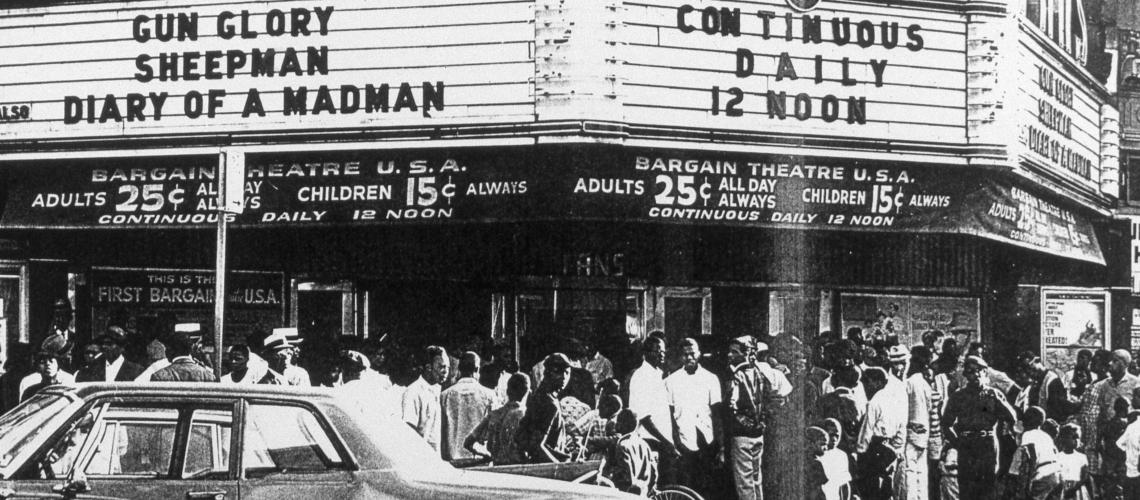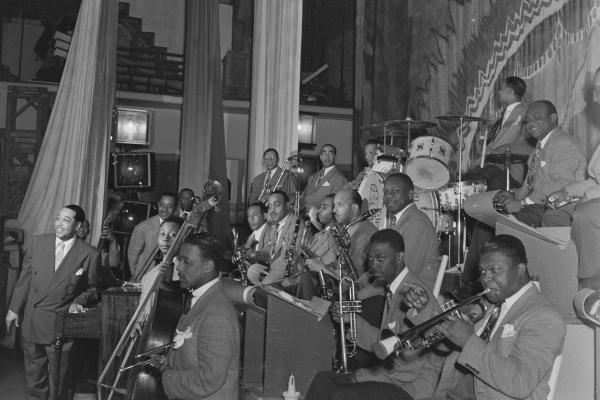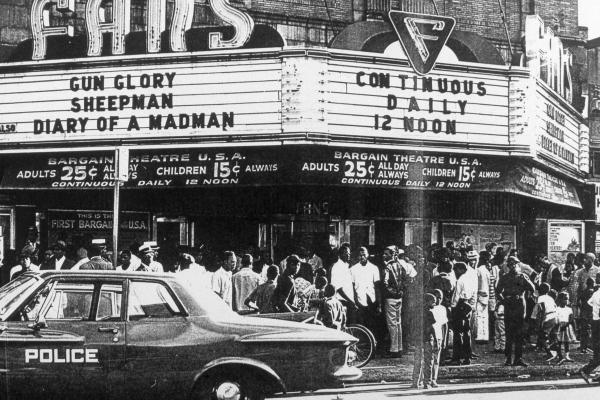A Local Theater for Second-Run Movies
Fan’s, the last incarnation of Fay’s Theatre, served as a second-run movie theater and occasional beacon for community outreach until 1964.
When Fay’s Theatre became Fan’s Theatre in 1944, its days as a jazz club were numbered. Orchestras and live acts were too expensive. Instead it became a local theater featuring minor movies or second-run major movies. Fan’s finances coincided with a nationwide decline in cities mid-century due to the end of the WWII construction bubble and a decrease in city populations. Fan’s continued to be a part of the community through youth outreach to disadvantaged local children. Unfortunately, the theater was demolished in 1964 after thieves attempting to remove a ceiling fan caused part of the building to collapse.
Fay’s Theatre became Fan’s Theatre in September 1944 when the theater was again leased to Wax Interests. Wax Interests, a company specializing in African American theaters, previously leased Fay’s for a period of time in the 1930s. The price was only $75,000, 3/8 of the price it had been built for back in 1914.[1]
After 10 years in the spotlight, the transition to Fan’s Theatre was also a transition back to being, essentially, a local theater. It quickly became apparent that live acts and music would be unaffordable. After putting on a few local acts in 1945, no more were featured.[2] The theater could no longer afford to pay for an orchestra or live acts, so essentially the last vestiges of vaudeville died out. It couldn’t even afford to change its name. Wax Interests simply altered one letter in the sign.[3] Instead, Fan’s became a second-run film operation, mainly showing minor flicks and occasional big name movies when they had left theaters in Center City.
The decay of Fan’s Theatre’s fortunes coincided with a larger trend gripping Philadelphia and other northern cities during this time. Populations in cities gradually decreased as middle- and upper-class White families began moving to the suburbs en masse. At the same time, World War II caused a bubble in manufacturing in factories across the United States. The end of the war saw the bubble pop, and the number of available manufacturing jobs decreased in cities like Philadelphia. The trend only accelerated as time passed. In short, while the population of African Americans in Philadelphia increased to about 655,000 in 1970, that same population in many cases became poorer.
Rising poverty had led to rising crime. Crime had been an issue in the 1930s and 1940s—a gang had even robbed Duke Ellington outside Fay’s—but it ballooned mid-century, becoming a prominent concern for the community. Many local groups conducted youth outreach in the hope of preventing future crime.[4] Fan’s Theatre played a prominent role in this movement, hosting an annual Christmas party for disadvantaged local children, organized by the 40th Street Youth committee from 1955–1960. As many as 2,000 children attended this event and received a nice meal, a present, and a free movie.[5] Echoing when it had been repurposed as a church decades before, the theater could still play an important role as a community space for its audiences and customers.
Unfortunately, the theater came to an abrupt end. During a movie screening on August 25, 1963, thieves attempting to dislodge a large fan from the ceiling caused the roof to collapse and fall into the orchestra below. Ten people were injured and the theater was never rebuilt. It was demolished in 1964.[6]



